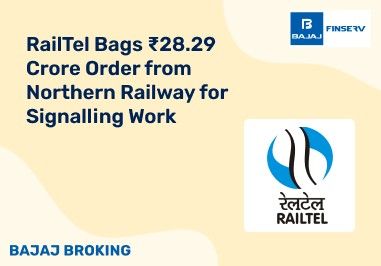Investments are often costly and require a commitment that can’t be taken lightly. That is why investors often do quite a bit of analysis before deciding to go with their choice. One such analysis is cost benefit analysis. This analysis helps the investors compare the cost that comes with an investment with the benefits it can offer. The goal here is to assess if the benefits outweigh the costs. Let’s try to understand what is cost benefit analysis, which is relevant to basically anyone with a trading account.
Understanding Cost Benefit Analysis in Detail
Cost, doesn’t simply mean financial cost. Cost benefit analysis, cost benefit analysis, takes into consideration all kinds of costs, including social and environmental. The process manages to quantify costs in a way that makes it easier to study and compare. This analysis helps decision makers to choose which projects to invest in. Sometimes, ongoing projects are weighed to decide whether they should be continued or dropped. There are cases where budgets are revised based on cost benefit analysis, to make sure the cost is under control and the Cost-to-benefit ratio still makes sense. Now that we understand the cost benefit analysis meaning,
Additional Read: What is Demat Account: Importance, Features and Types
The Cost-Benefit Analysis Process
Cost-benefit analysis usually includes a number of phases, such as figuring out the potential advantages, calculating the expenses, and identifying the costs. It begins by quantifying all project-related expenses before computing the anticipated benefits. These advantages may be material or immaterial. Analysing whether and by how much the benefits exceed the expenses marks the process's completion. Making an educated judgement on whether to move further with the effort is aided by the outcome.
Determine the Costs
It is important to determine the whole range of expenses that are associated with a project when you perform a cost-benefit analysis. These expenses could be direct or indirect. For example, long-term maintenance or original capital costs. Expenses like opportunity costs are not that easy to spot and include in the list. Such expenses can often go unnoticed and it is important to make sure these are recognised and included. Understanding and weighing all the costs involved in a project is important to do an effective cost benefit analysis.
Direct Costs
Direct costs are the most easily recognisable costs related to a project. These expenses are paid out of the pocket. Direct costs include the original investment, material costs, or wages, that can be directly linked to the action under consideration. For example, the direct costs associated with launching a new product could include labour wages, marketing charges, and production costs.
Indirect Costs
Indirect expenses do not directly affect a project but they still have an impact on the overall cost. These could be fixed expenses like paying for utilities or paying manager salaries and things like that. Indirect costs do not directly add to the core tasks of the project but are inevitable for the completion of the project. They have to be thoroughly studied and added to the cost of the project for an effective cost benefit analysis.
Intangible Costs
Costs that are difficult to quantify in terms of money could still have an impact on the project. These are called intangible costs. These could include possible damage to a business's reputation, dissatisfaction amongst clients, or demotivation among staff members. These are impactful even if they are not costs, in the traditional monetary sense. They have to be understood and included in a comprehensive cost-benefit analysis even though they are hard to measure because they have an impact on sustainability over the long run.
Opportunity Costs
When you have options to choose from and you pick an option, it is natural that you are giving up on the opportunity that the other option could give you. Opportunity costs are the benefits you sacrifice when you decide to go with one option and skip the other option. Consider this example. A business considers two options: investing in machinery or increasing marketing budget. After discussions the business decides to invest in new machinery. Now, when you consider the cost of the new machinery, the opportunity cost of missing potential customers should be included. This is because our decision to invest in machinery, made us give up on the opportunity to attract more customers to our business by increasing our marketing budget.
Cost of Potential Risks
Risks are always a part of the decision making process - the decisions we make and the projects we invest in. All unexpected issues and uncertainties that may come up throughout the course of the project are considered during cost benefit analysis as possible risks. This cost category would include disturbances to the supply chain, changes in government regulations among other things. To do a successful cost benefit analysis, it is important to study these risks and add them into the project's expenses.
Fixed Costs vs. Variable Costs
Fixed costs are expenses that we have to pay irrespective of our usage. Fixed costs are expenses like rent or salaries that don't change based on our activity. Variable costs are expenses that we pay based on our usage. For instance, when we produce more as a business we would pay more for raw materials and output.
There is also a concept called sunk cost, which refers to the cost you can’t recover anymore. It is important to move on from that loss.
Determine the Benefits
The process then moves on determining the benefits associated with a project, and here the major benefits that are considered for this analysis.
Increased revenue or profit
Cost savings over time
Enhanced efficiency
Customer satisfaction or loyalty
Social or environmental benefits
Improved employee productivity
Brand value enhancement
Features of Cost-Benefit Analysis
Cost-benefit analysis has certain distinct features one can identify it with. Here are the most prominent features of cost benefit analysis.
Quantitative Evaluation: All costs and benefits that are considered for the analysis are quantified so that the comparisons can be done by decision makers effectively.
Objective Comparison: The quantification among other things ensures that the comparisons done through the analysis are objective and reasonable.
Time Value of Money: When you consider future costs and benefits the value of money is adjusted for time. Sometimes a past value may be considered and indexations are done to arrive at a present value.
Comprehensive Scope: cost benefit analysis considers and includes all costs and benefits which can be financial, social, and environmental.
Risk Assessment: When listing the costs associated with a project, potential risk factors are considered alongside the costs.
Now that we have gone through the features of cost-benefit analysis, let’s move on to the limitations of cost-benefit analysis.
Limitations of Cost-Benefit Analysis
Cost-benefit analysis is a useful technique, but it has a few limitations. One of the most significant challenges is precisely determining the monetary worth of intangible expenses or benefits. How do you value environmental protection or consumer satisfaction, for example? There is also the risk of simplifying everything down to numbers which may result in an oversimplification that can affect efficient judgement. Another risk that we have to think about is how the adjustment of values to reflect future costs and benefits, can give us inaccurate estimates. Such errors in calculation could give us a picture that does not represent reality. Besides, this analysis doesn't include changes that happen in the long run that can't be predicted accurately. With that, let’s move on to the advantages of cost-benefit analysis and its disadvantages.
Additional Read: Differences Between Nifty and Sensex
Pros and Cons of Cost-Benefit Analysis
Pros
| Cons
|
Provides a clear, quantifiable way to compare options
| Difficult to assign value to intangible costs and benefits
|
Helps in making informed decisions
| May oversimplify complex decisions
|
Encourages objective analysis
| Can result in biased outcomes if estimates are inaccurate
|
Useful across industries and sectors
| Time-consuming and resource-intensive
|
Takes risk factors into account
| May ignore long-term societal impacts
|
Conclusion
The flexible and useful tool of cost-benefit analysis aids in determining if a project's advantages outweigh its disadvantages. Through the integration of both concrete and abstract elements, cost benefit analysis enables decision-makers to make better-informed decisions and optimise resource allocation for optimal results.
Disclaimer: Investments in the securities market are subject to market risk, read all related documents carefully before investing.
This content is for educational purposes only. Securities quoted are exemplary and not recommendatory.
For All Disclaimers Click Here: https://bit.ly/3Tcsfuc














